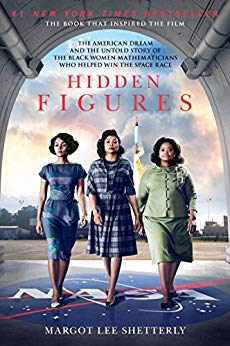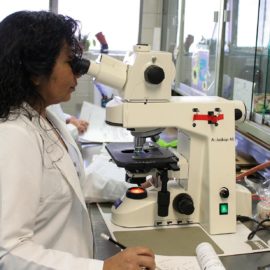

This article is an excerpt from the Shortform summary of "Hidden Figures" by Margot Lee Shetterly. Shortform has the world's best summaries of books you should be reading.
Like this article? Sign up for a free trial here .
What can NASA segregation tell us about the rest of the country during the Civil Rights Movement? What can we learn from Hidden Figures segregation and the fight for equality?
NASA segregation reflected the segregation of the rest of the country. But when the president ordered NASA (then NACA) to tap into the large workforce they were ignoring, women like Dorothy Vaughan and Katherine Johnson got the chance to prove themselves. Read how the women of Hidden Figures helped end segregation in NASA.
NASA Segregation at Langley
World War Two was the most devastating conflict in human history. Although the United States was spared from the ravages of combat on its own soil, the war nevertheless profoundly reshaped the country’s economic, social, and political system. Perhaps the most lasting and significant domestic effect of World War Two was its role in accelerating the dismantling of the Jim Crow system of racial segregation that had prevailed throughout much of the American South for over a century following the end of the US Civil War.
Under pressure from African-American civil rights leaders, the Roosevelt Administration took steps to desegregate the industry and open up defense jobs to black female applicants as well. This enabled the first generation of black female professionals to get in the door at Langley. The opportunity for a black person to work as a computer in an aeronautical laboratory (and not as a janitor or cafeteria worker) was something altogether new and extraordinary. However, NASA segregation was far from over.
Ongoing Segregation Issues
As progressive and forward-looking as Hampton Roads may have seemed at first glance to someone like Dorothy Vaughan, it was still a segregated city of the American South at the height of the Jim Crow era. NASA segregation was as real as it was in the rest of the country. Black people and white people had separate entrances to get on buses, and blacks were expected to give up their seats to whites if the white section was filled. African-Americans who were caught sitting in white sections could be fined, arrested, or even dragged off the bus and beaten by police. These practices even extended to black soldiers in uniform.
The injustice seemed all the more perverse during World War Two. Black Americans were being asked to fight and die to defeat genocidal Nazis in Europe, yet were simultaneously being told to accept a brutal and violent system of repression at home. The irony wasn’t lost on many. Black scholars like Altona Trent Johns noted the distressing similarities between the German treatment of Jews and southern whites’ treatment of their black fellow citizens, a theme that was echoed all throughout black civil society—in churches, the press, sororities and fraternities, and civic organizations. The question was clear: What are we fighting for? Victory in the war overseas had to be matched by victory over white supremacy at home.
Despite the opportunity, new arrivals to Langley like Dorothy still had to face the prejudice of living and working in a segregated city of the American South at the height of the Jim Crow era. Black people had to use separate bathrooms, separate drinking fountains, separate entrances on buses, send their children to separate schools, and live in separate neighborhoods—or face severe repercussions. Indeed, segregation was powerfully entrenched in the nation’s historical experience and was an all-encompassing feature of life in Virginia.
The prejudice even followed these women into the laboratory at Langley. A separate area of the facility, known as West Area Computing, was reserved for the new black female computers. Langley was generally a place where colleagues worked closely with one another. Because of the color of their skin, however, the West Area Computers were largely excluded from this collegial atmosphere. This was symbolized most hurtfully by the sign on the table where they sat at the back of the cafeteria that read, “COLORED COMPUTERS.” In an act of defiance, the women of West Computing began tearing the sign down each day they saw it, a first shot across the bow for equality and dignity and one of the first steps to ending NASA segregation.
Facing this climate of discrimination, the first generation of West Computers established their own culturally vibrant and cohesive communities all throughout Hampton Roads. Such communities enabled mobile young black families who’d moved to Virginia to keep their morale high and served to welcome and acclimate new waves of black migrants to the region.

———End of Preview———
Like what you just read? Read the rest of the world's best summary of Margot Lee Shetterly's "Hidden Figures" at Shortform .
Here's what you'll find in our full Hidden Figures summary :
- How brave black women were instrumental to the American space race
- How they confronted racism and sexism to forge a better future
- Their enduring legacy in American history







I might read this book if it wasn’t a piece of fiction posing as no-fiction. There’s literary license, and then there’re outright lies, and this book, as well as the movie, fall in the latter category and does an extreme disservice to those who fought at their own peril to create and sustain change. Nowhere have I read about ANY of that, the sacrifices of those who “did the right thing” and were the catalyst for moral advancement as a society, nowhere, instead they’re all willfully ignored, even demonized as a group, lumping all into one as racists will do. I’m not a fan of ignorance, so I’ll hard pass.